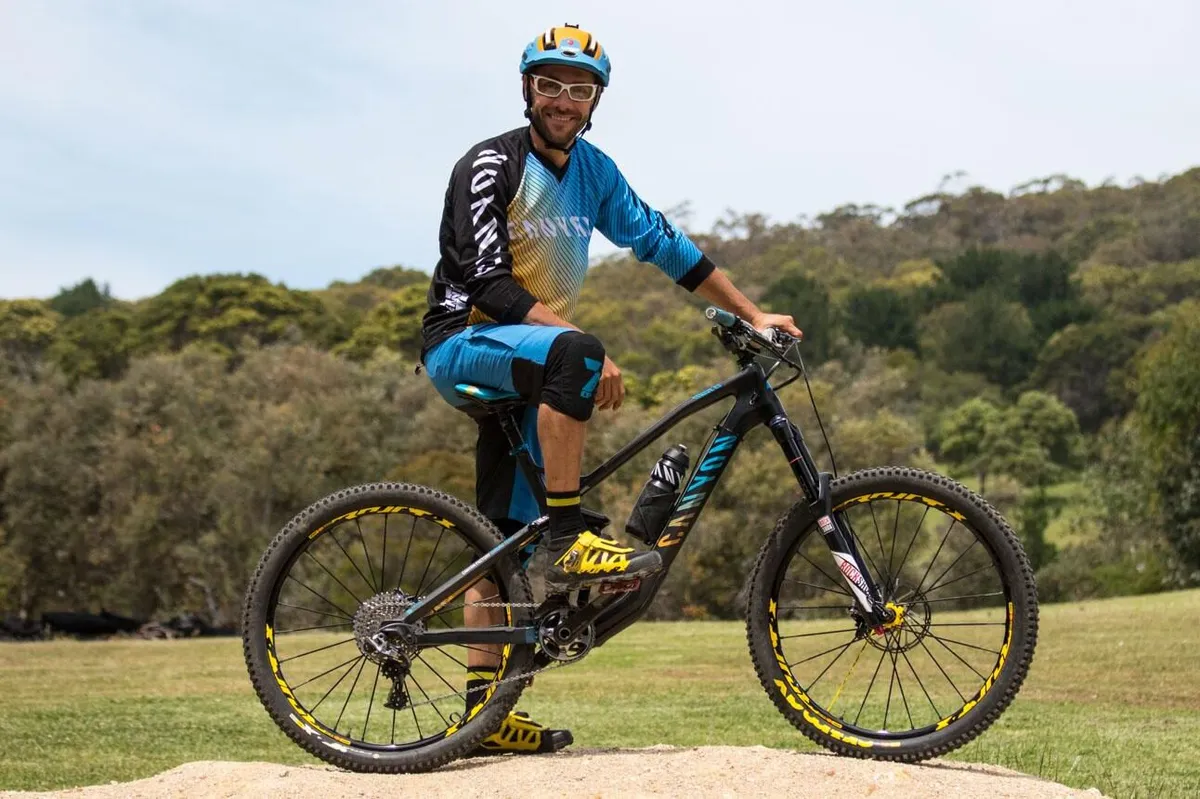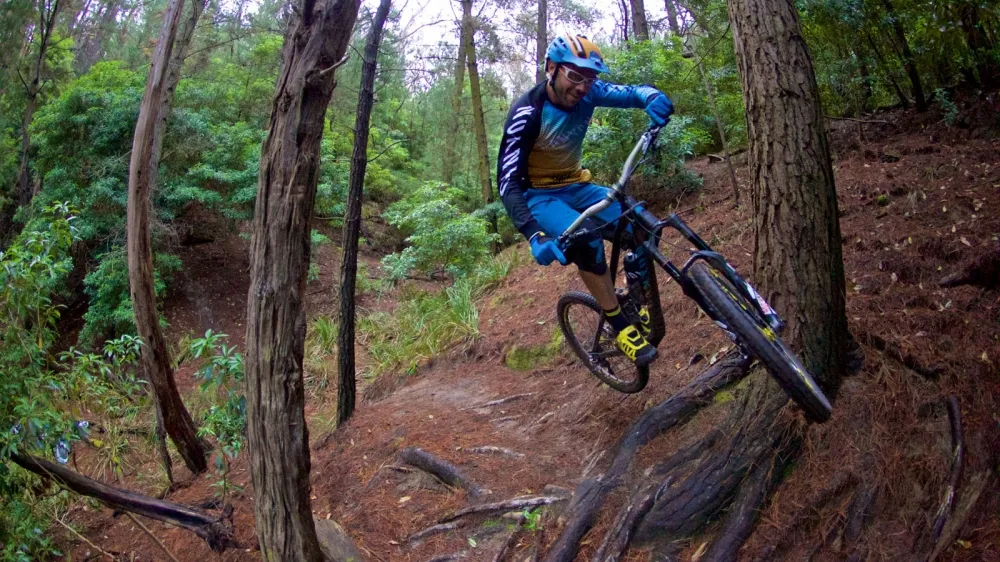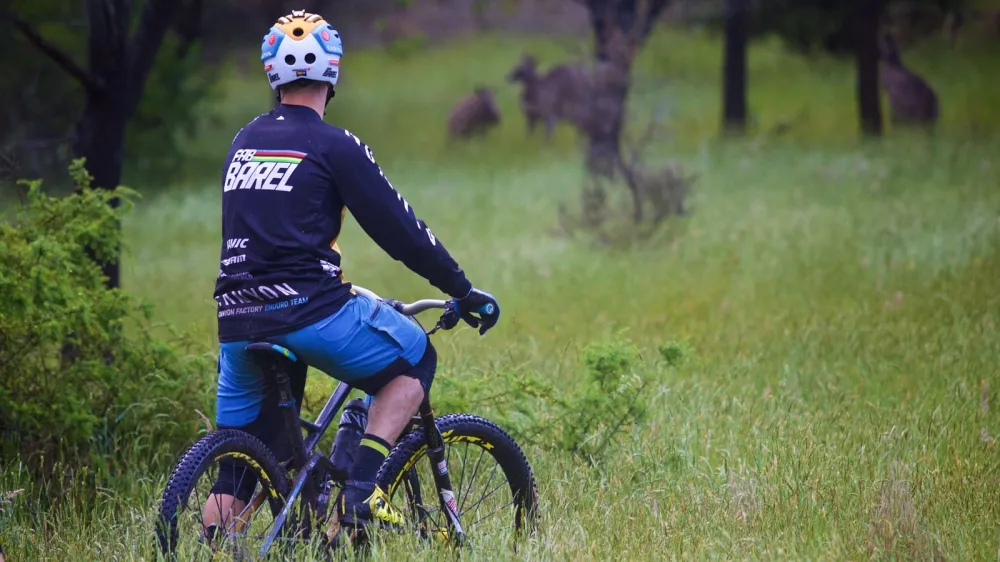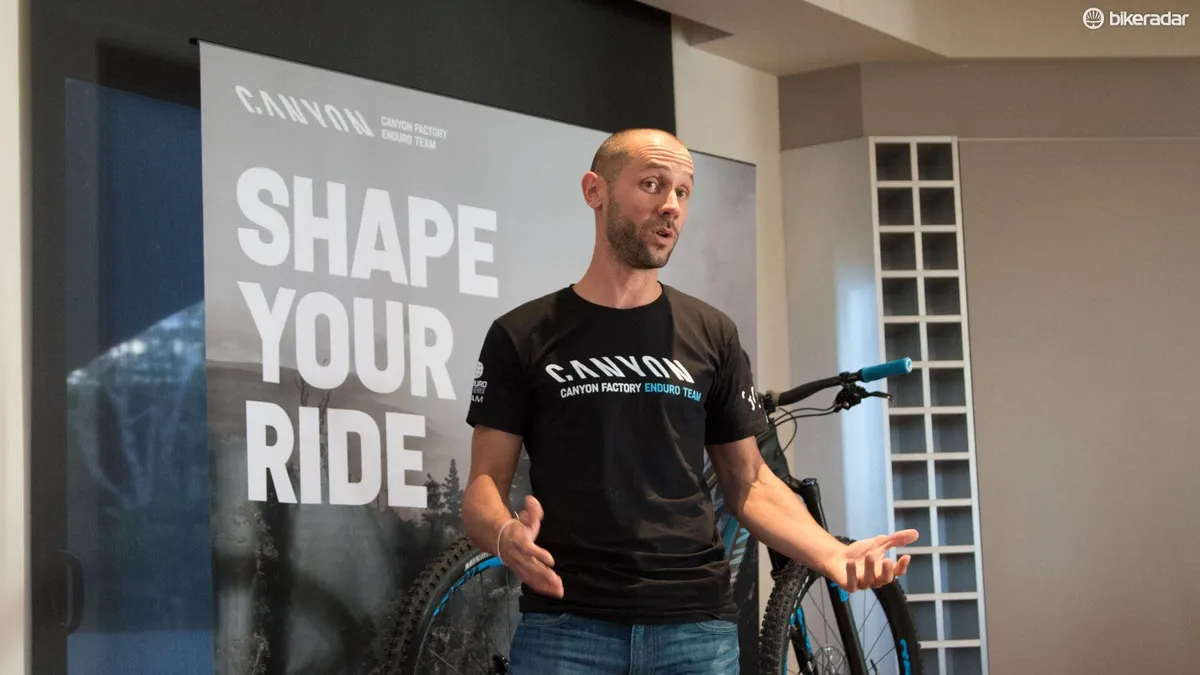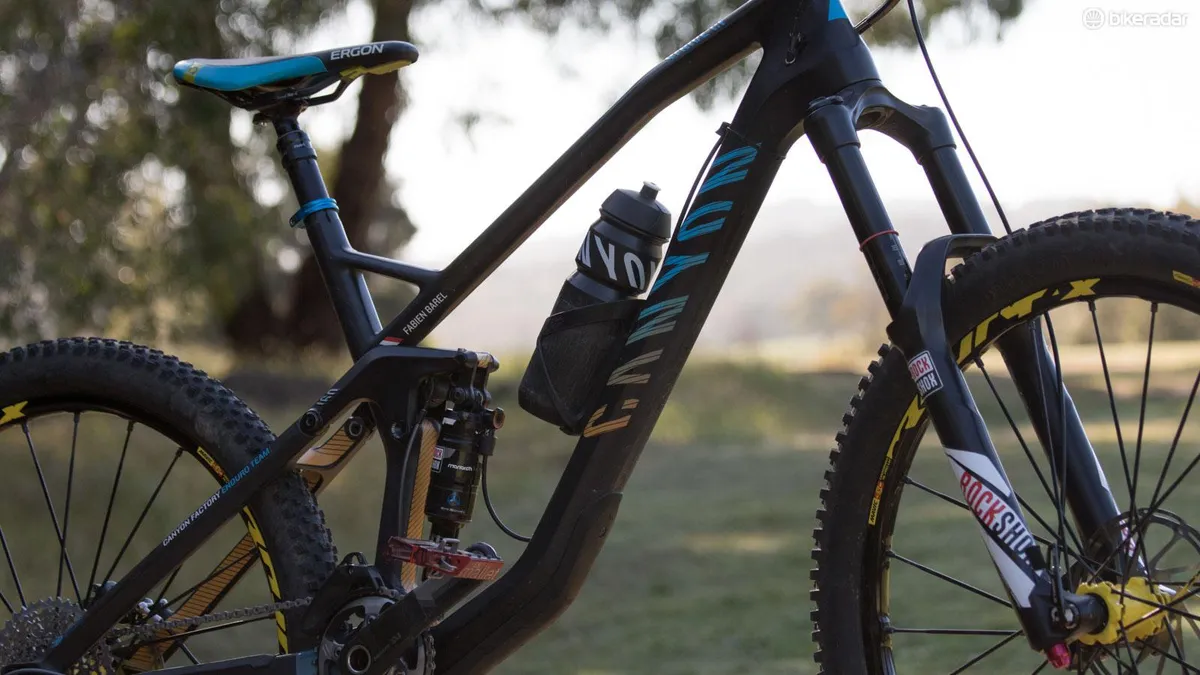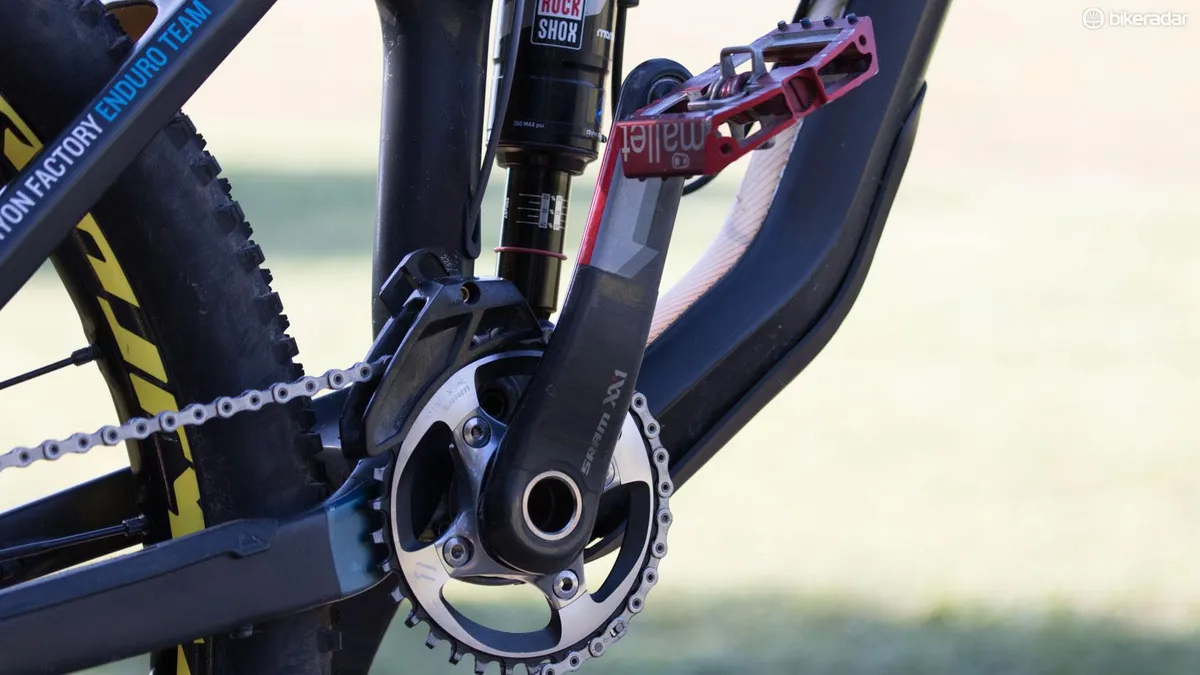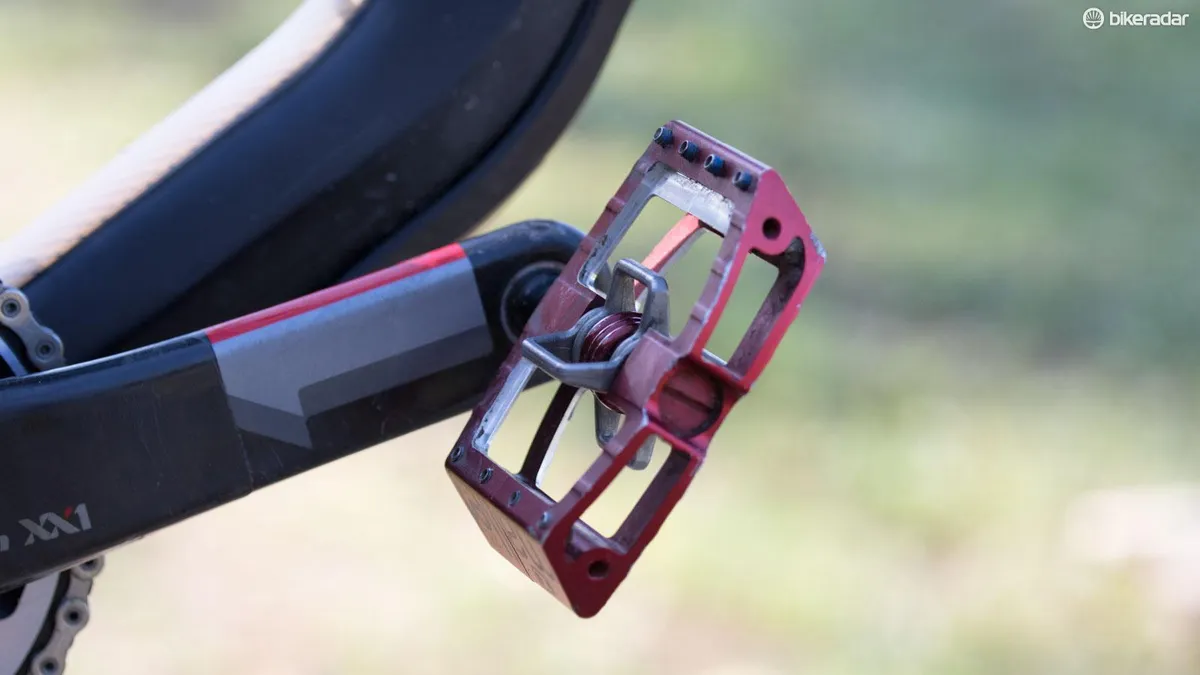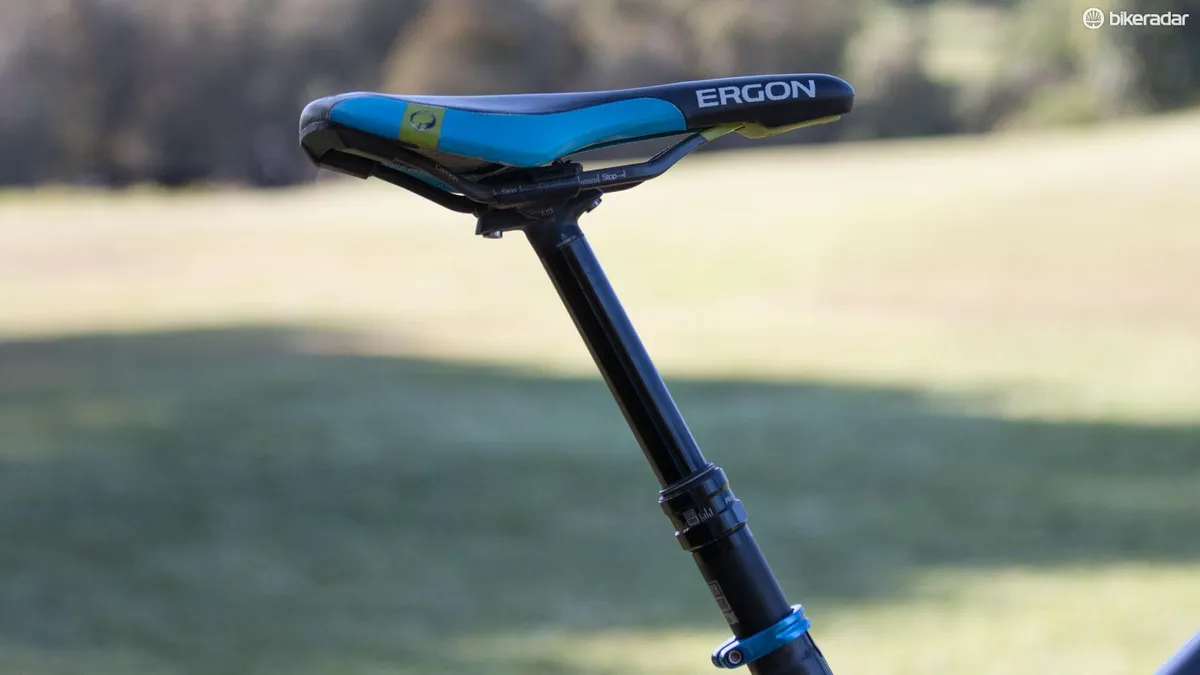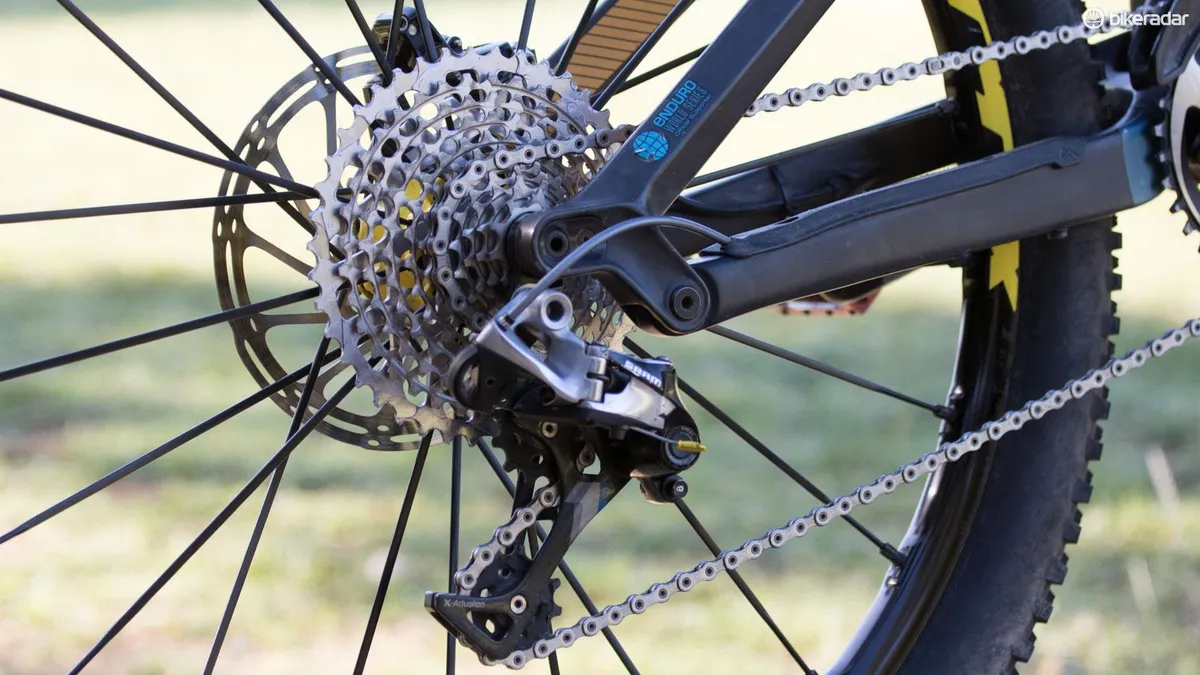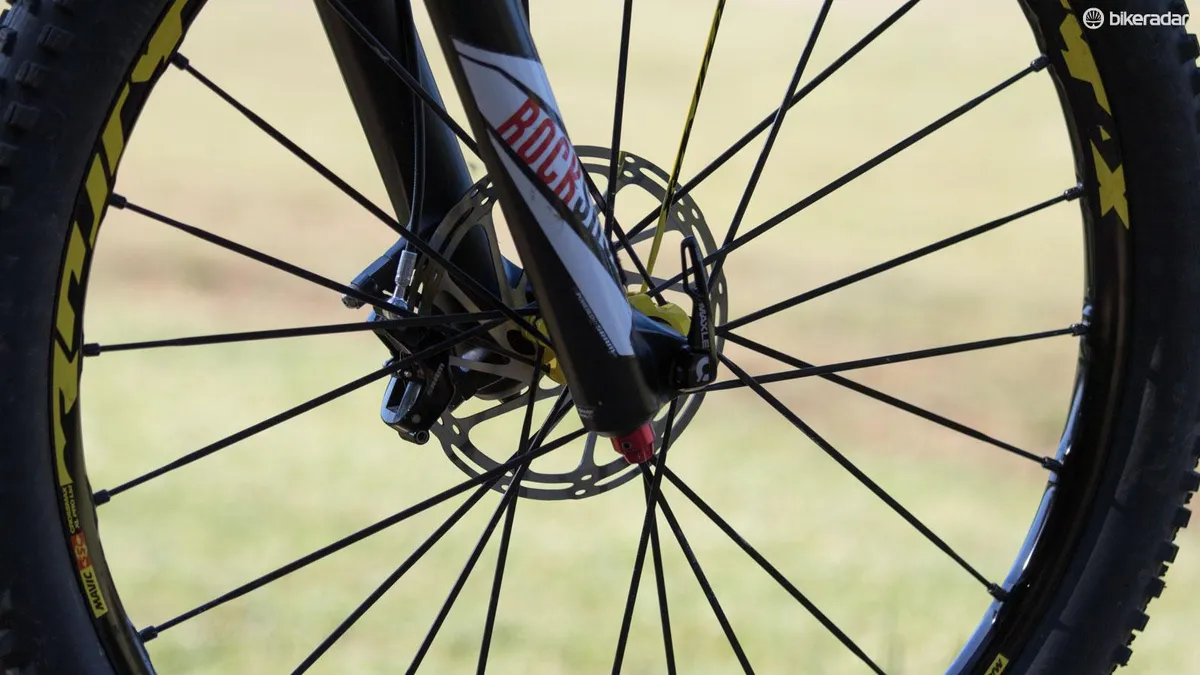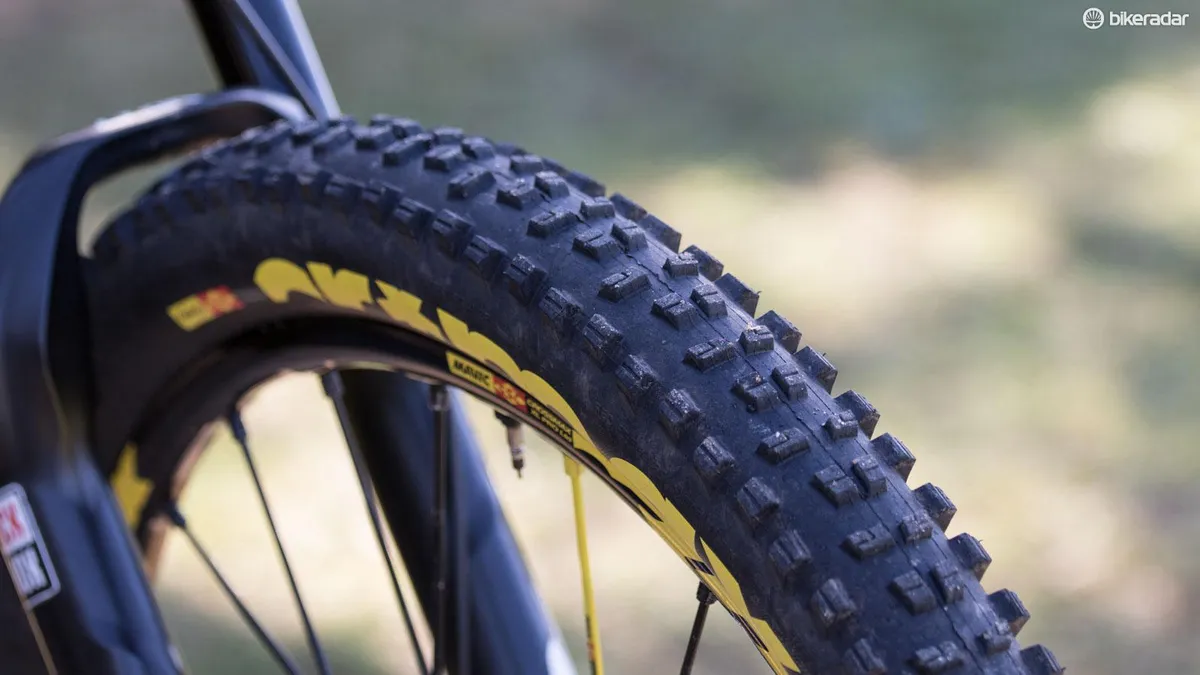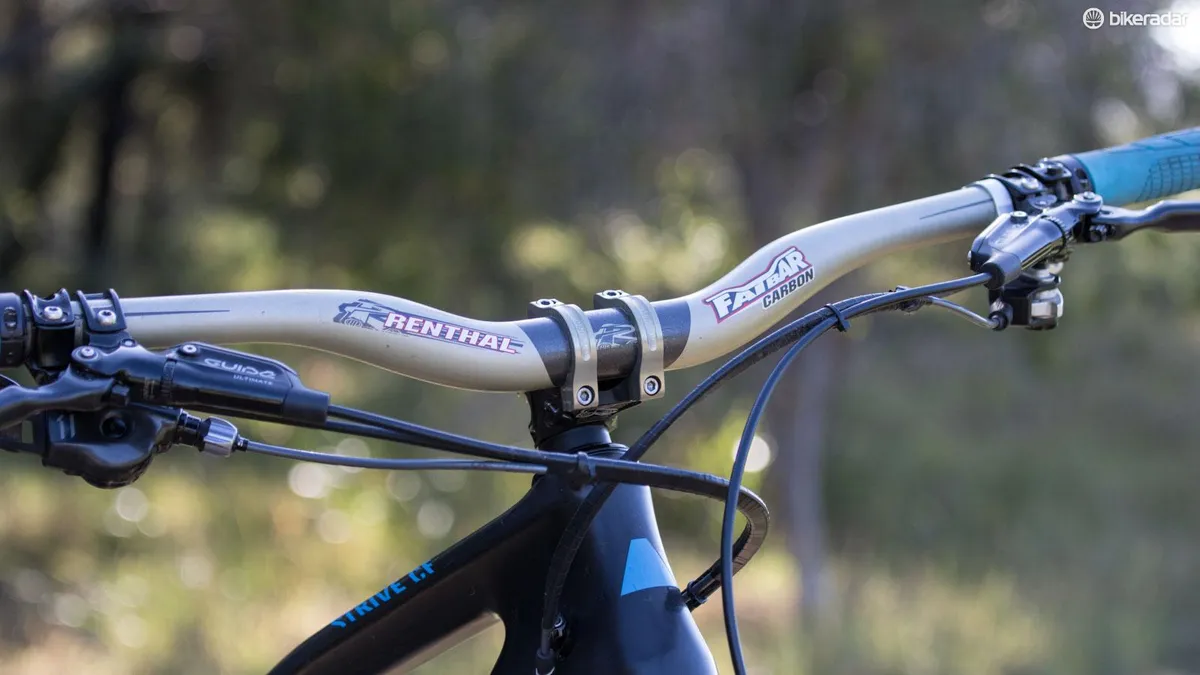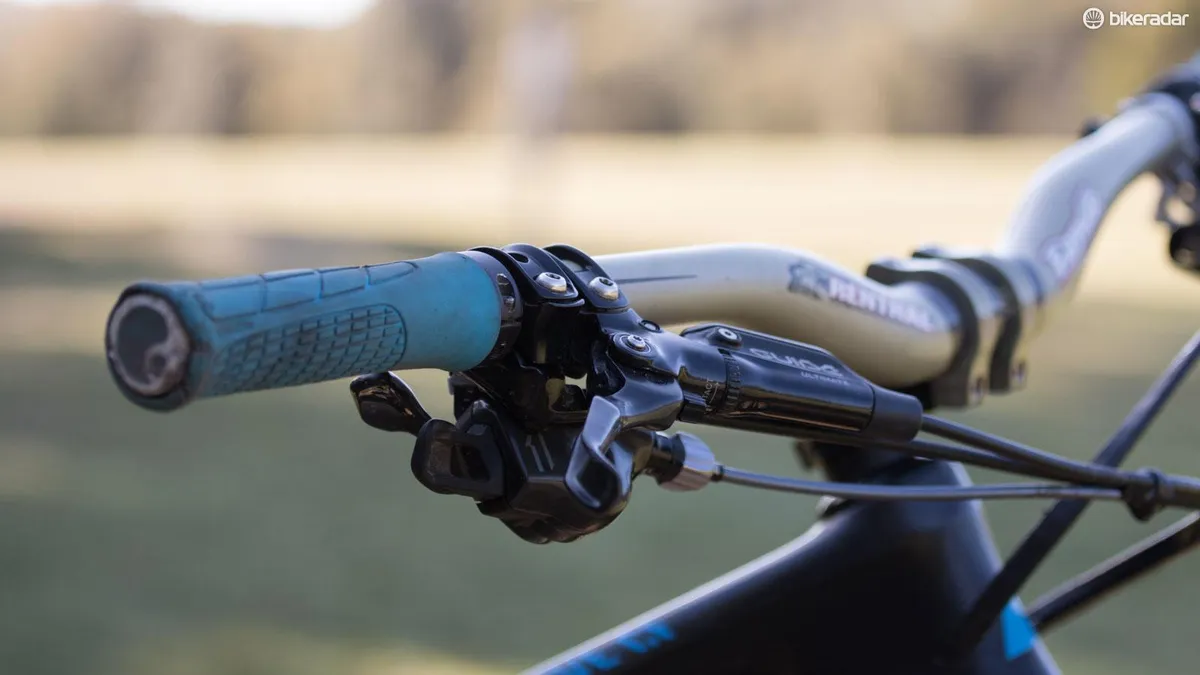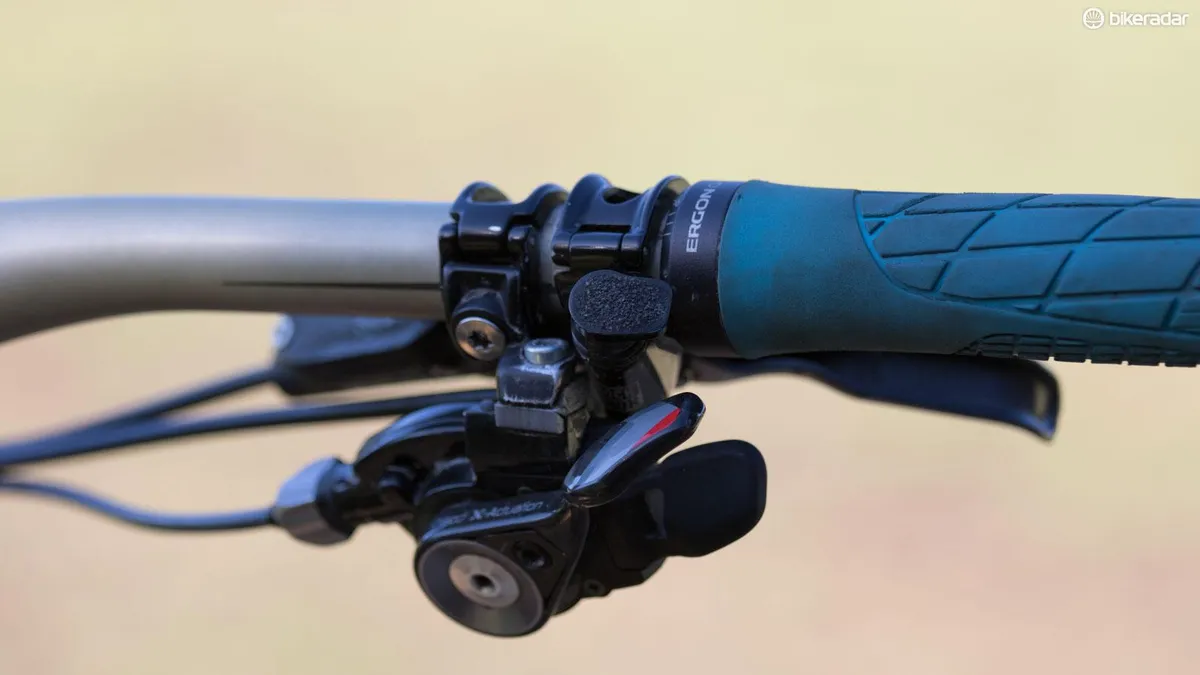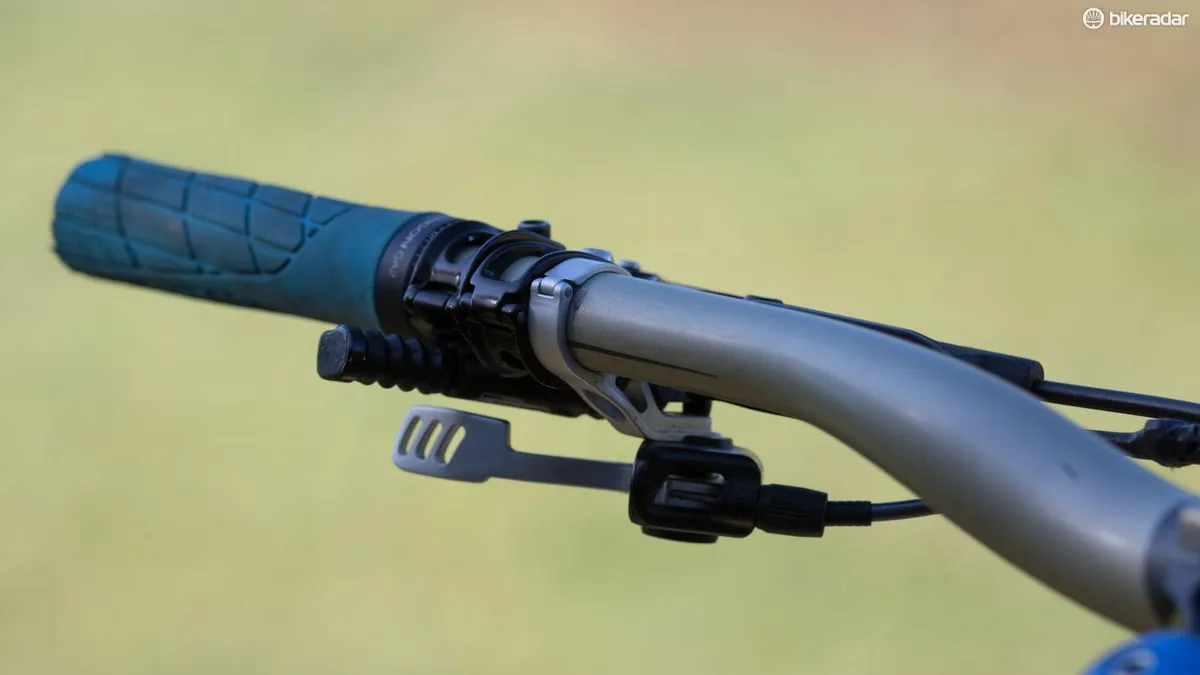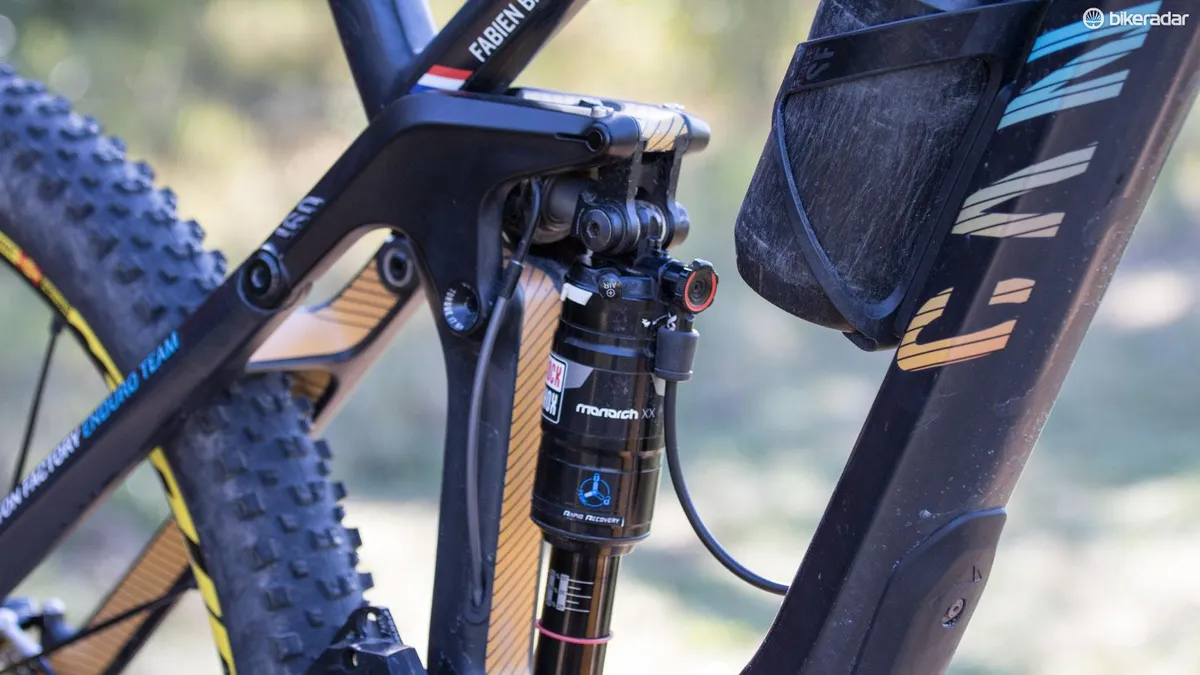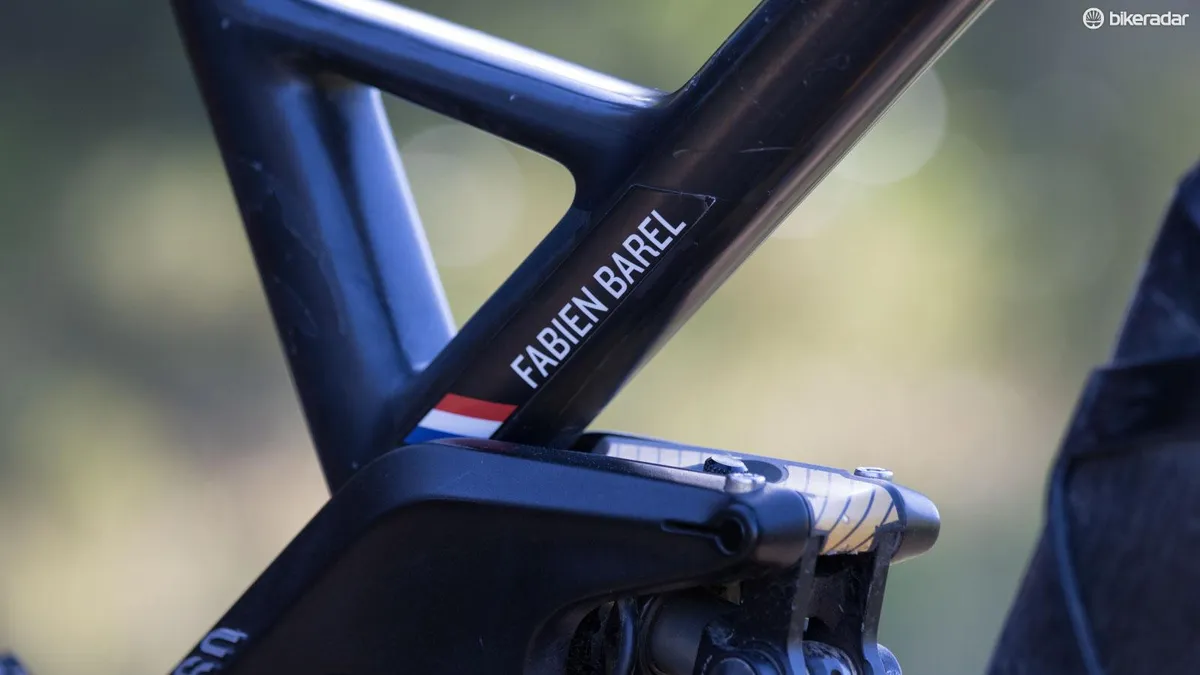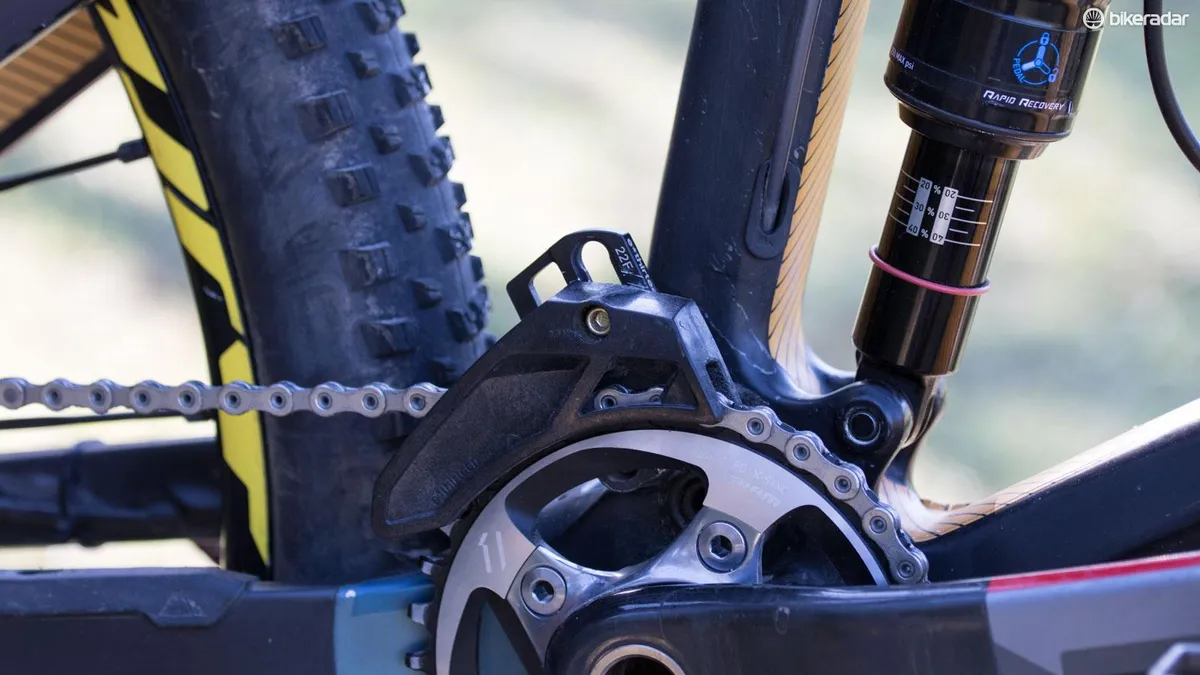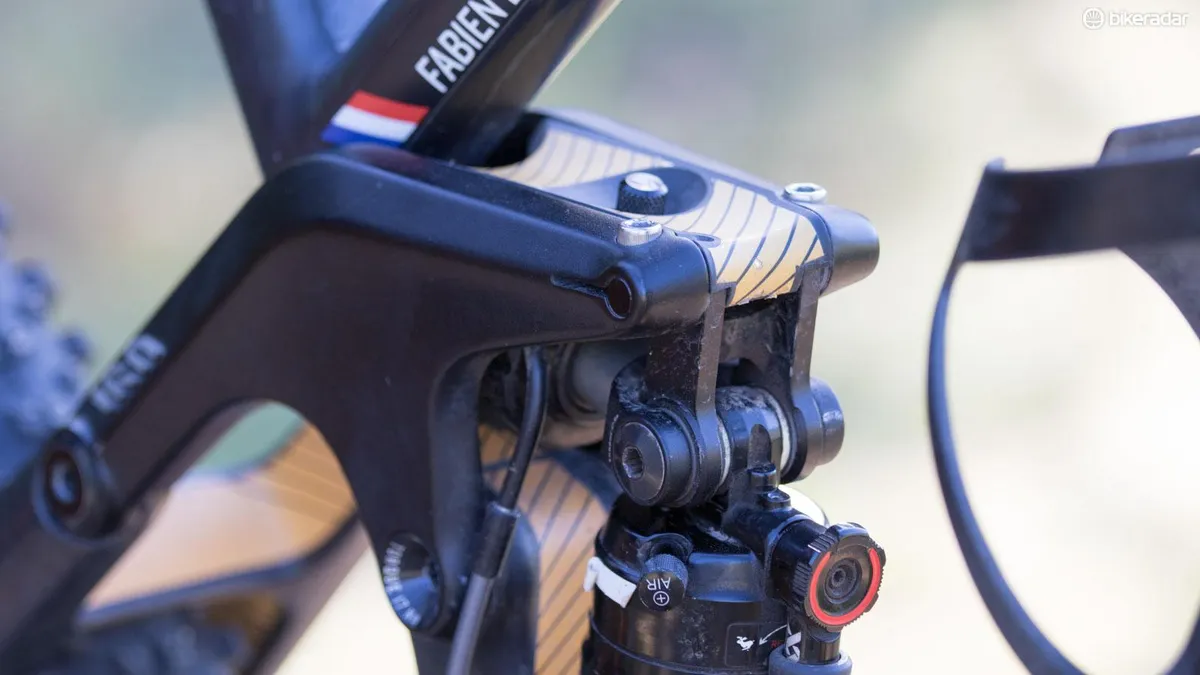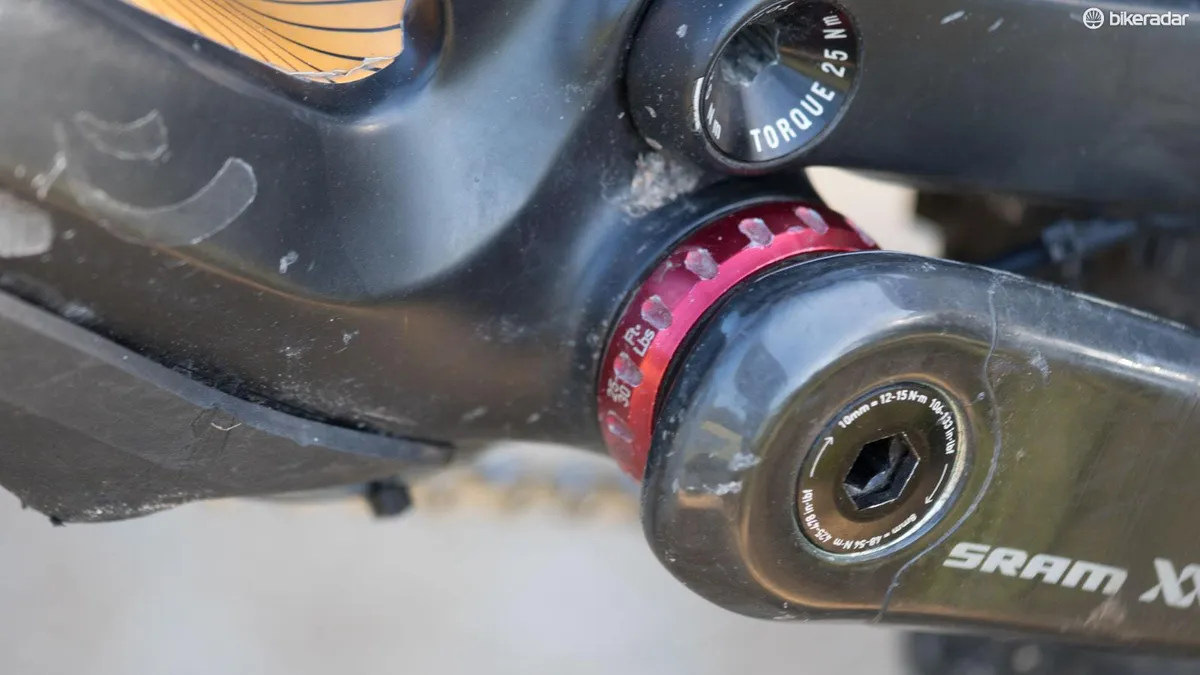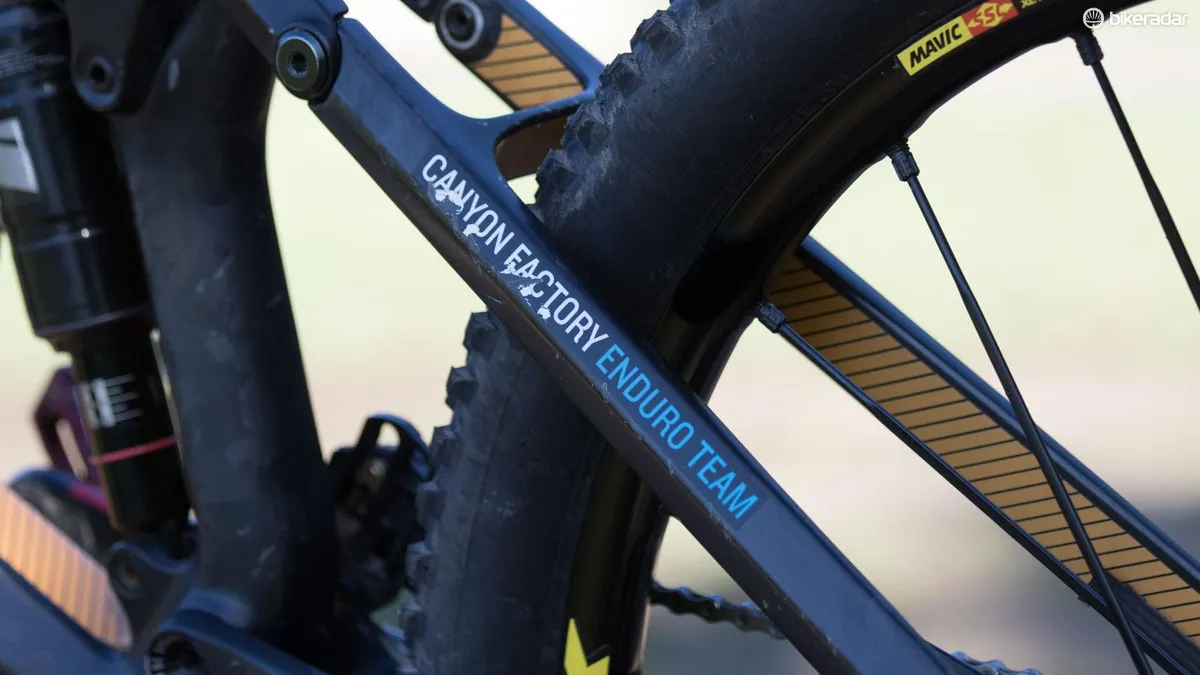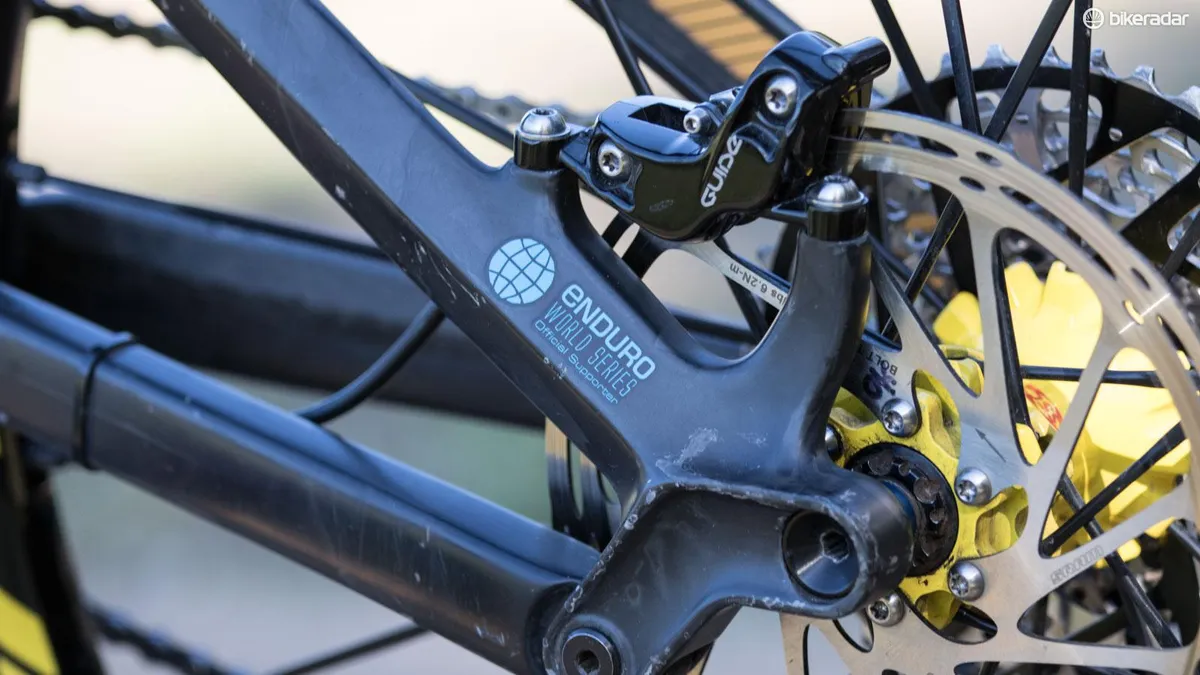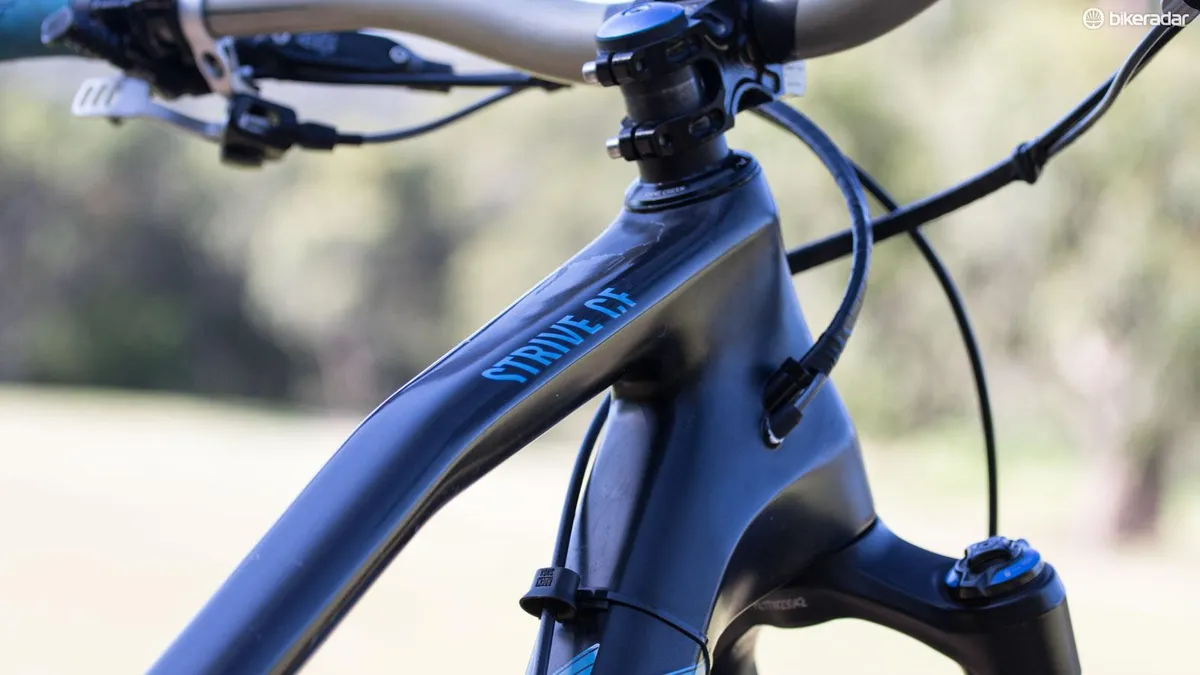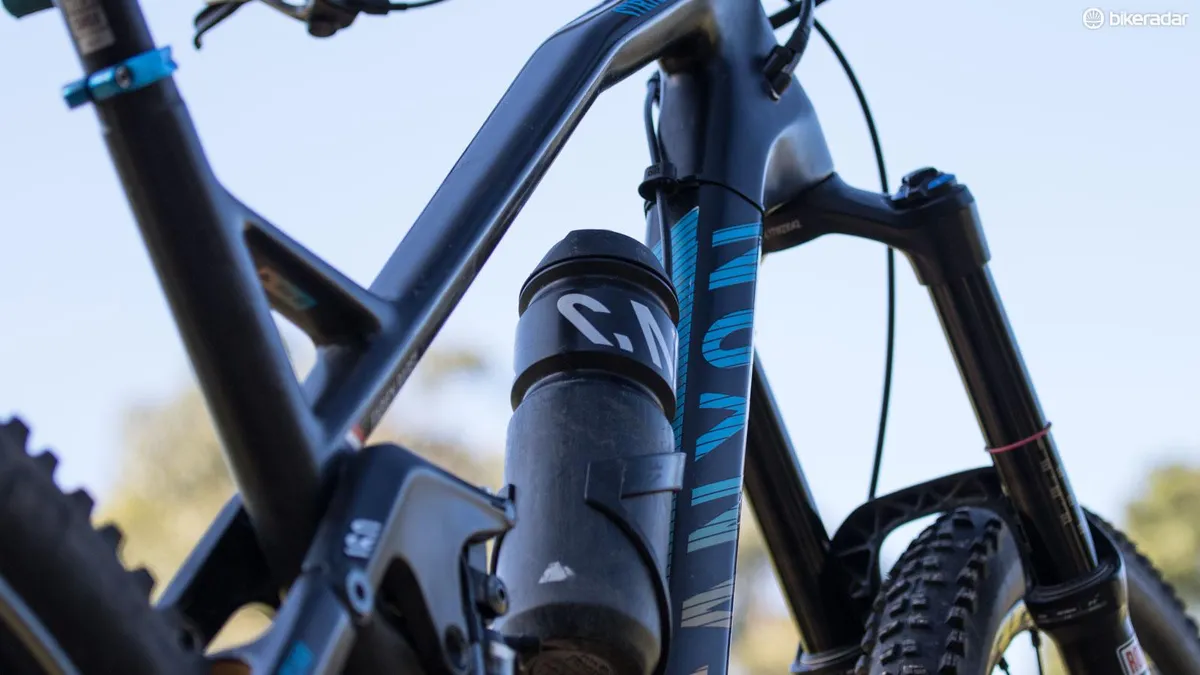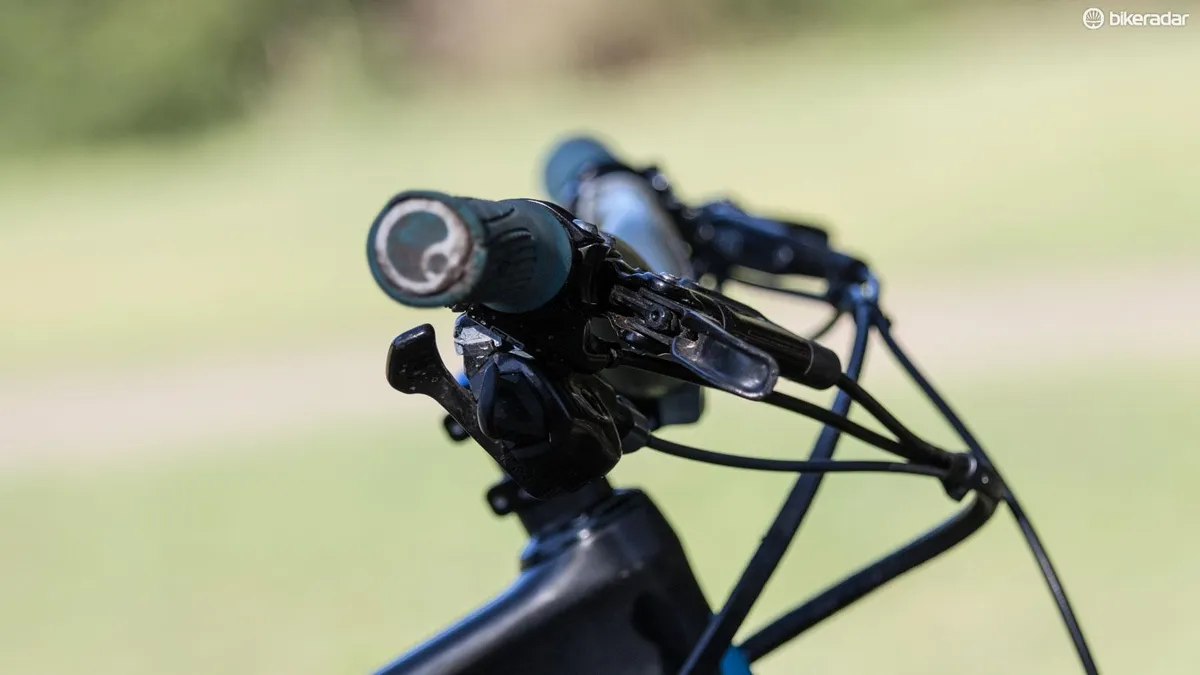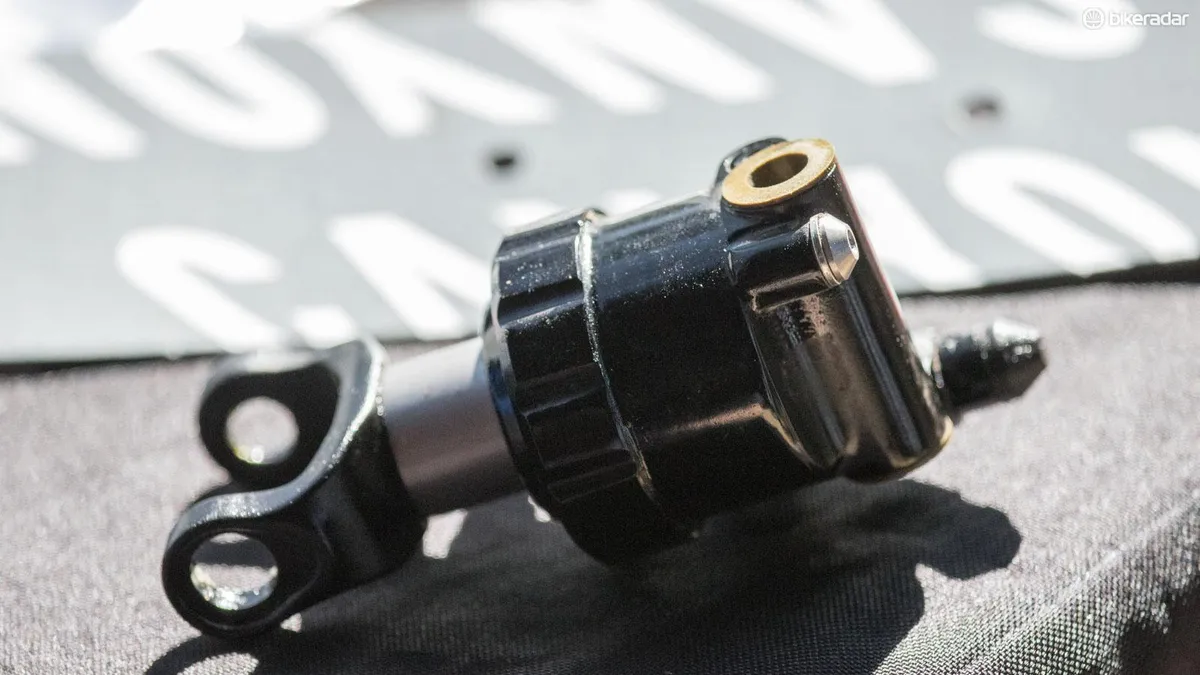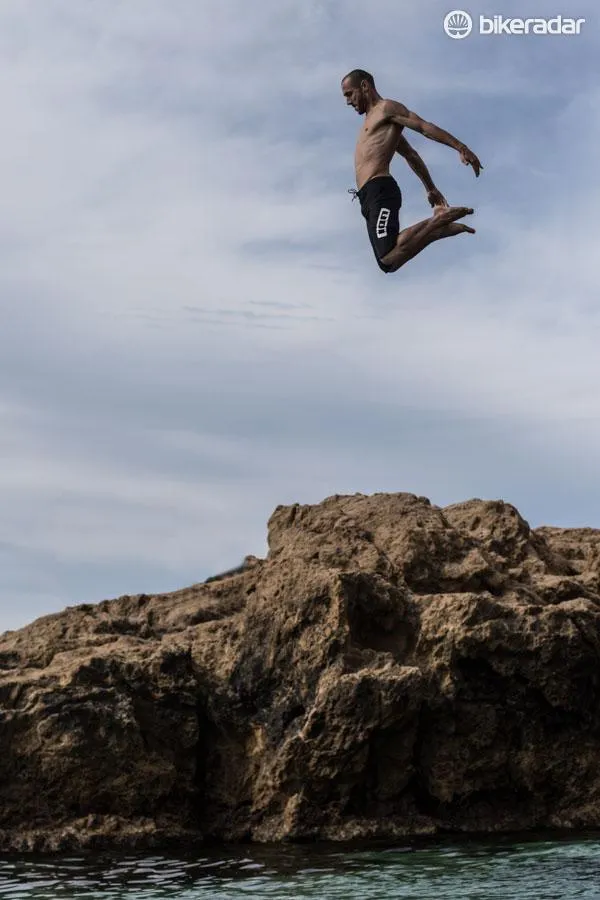Moving into ‘retirement’, Fabien Barel has plenty ahead of him yet. Despite having a pro mountain biking career that spans two decades, he’s only now reaching his mid-thirties.
With this, 2016 will see the French fast man continue as an integral part of both Canyon’s and Mavic’s product development, as well as working hard on his helmet brand Urge. Exact details of all that are to be announced, but in no way is this the end of ‘Fab’.
We caught up with the twice downhill world champion during his recent visit to Australia, where he was bombing descents among the Kangaroos to help spread the word that Canyon Bicycles was coming to town.
Even across the world, Barel clearly has a far-reaching fan base. Young riders out for a morning session were in shock to see the legendary name on the back of a Canyon Factory Enduro team jersey, with the nice man from near Nice insisting on them getting some selfies, where they were too nervous to ask it.
A true professional at his craft, the fact that Barel is a qualified engineer has made him just that much more of an asset to his equipment sponsors. He has a long history of being hands-on in the development processes of the bikes he races, and the new Canyon Strive is no different.
With this, we take a look at Barel’s ‘training’ bike from the past season. It’s extremely similar to that of his race bike, but perhaps just a little more beat-up.Either way, it's an interesting setup.
The shapeshifting Strive
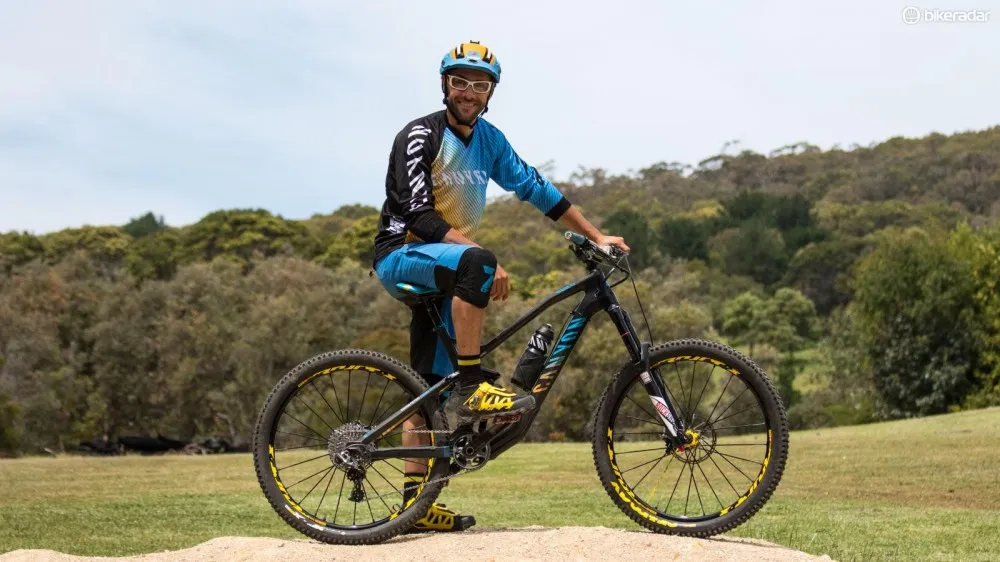
Fabien Barel and his Canyon Strive CF Team
Barel was integral in the development of the Canyon Strive enduro bike, and cites it as a key reason he moved to professional enduro racing after his retirement from downhill in 2011.
Standing at 1.81m (5ft 11in), Barel notoriously likes a long bike for his height and so uses a large-size Strive ‘Race’ frame. Compared with the regular option, the Race geometry simply features a longer front centre.
With either 160mm or 130mm rear-wheel travel options available via the flick of a switch, it’s the bike’s ‘Shapeshifter’ that sets it apart from the competition. Here, a proprietary two-position gas switch sits within the frame’s upper rocker link. Flick the switch at the bar, and the Shapeshifter changes the bike’s geometry, suspension kinematics and rear wheel travel.
For enduro racing, this means you effectively have a bike that’s focused for the descents when you need it, with a more climbing-oriented horse appearing when you need it.
There are traditionally compromises in your setup, whether that means an uphill or downhill bias. How can we make it into a system that provides us the advantages of both?
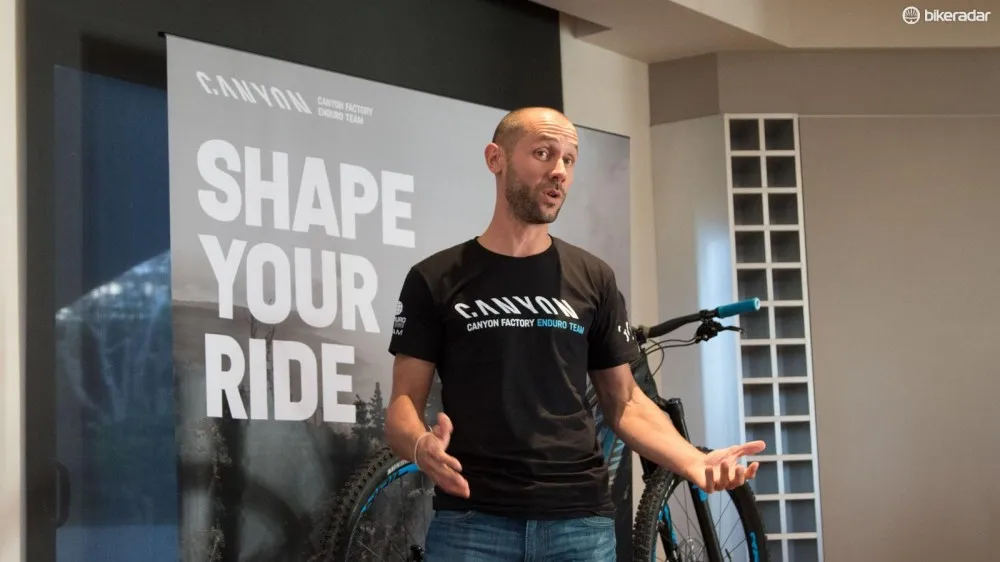
Barel can certainly talk technical
“We designed the frame to fit any shock. There is a 1.5-degree change in head angle, and 19mm in bottom bracket height. It also modifies the compression curve of the suspension," says Barel.
"It modifies the sag point and therefore the stiffness of the suspension. For example, 17 percent becomes 25 percent sag when switched to DH mode.” he adds.
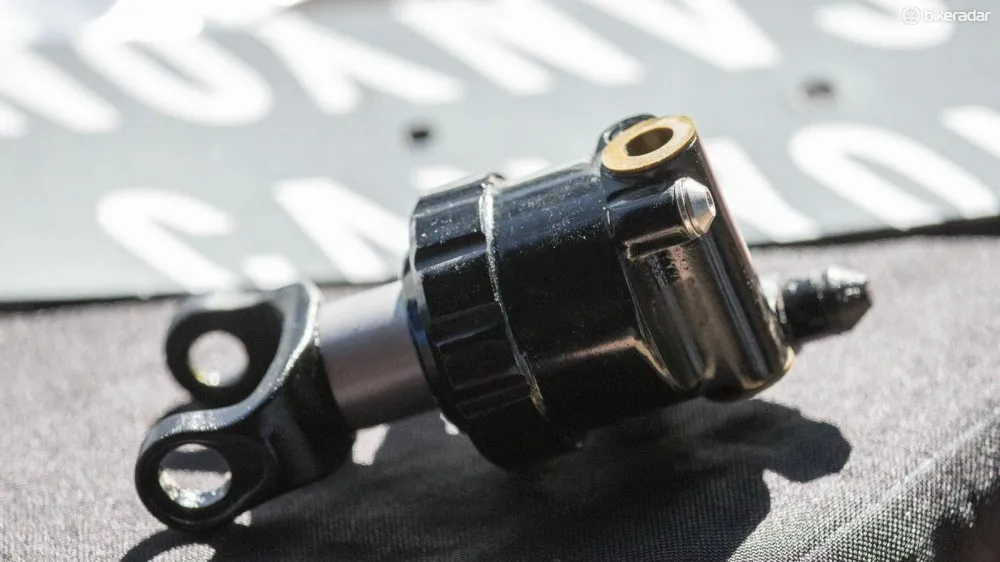
It's not suspension, and it's not a spring. It's a gas lever
Using a standard shock pump to build pressure in the Switch Shifter, Barel uses about 13 bar in his system. (Lighter riders should use about 12 bar, he says; heavier riders about 15 bar.) We’re told the Shapeshifter technology adds about 186g to the frame.
The Strive’s frame is made of carbon, with the exception of the upper link that houses the special gas lever. It's interesting to hear Barel talk about frame flex, when we ask if a frame can ever be too stiff.
“You don’t want flex in the front triangle, as you want the handlebar-to-pedal connection to be as stiff as possible for ultimate control. You also want the kinematic bearings ultimately stiff for function of the suspension,” he says.
“I don’t believe in introducing flex into the wheels; you want these stiff for steering. So the only place that you have to work with is the lateral rigidity in the seat and chainstay.
“Certain (frame) suppleness allows you to relax compared to a completely rigid bike. The fork though, that you want as stiff as possible.”
The suspension
Like many former downhill world champions, Barel is a suspension setup nerd. With this, he knows the intricate details of exactly what he’s using, and is quite happy to open it all up himself to make any changes.
“I have three Tokens [volume spacers] in the [RockShox] Lyrik," he says of his fork.
"The Lyrik has a much more efficient negative chamber than the Pike and so provides a more sensitive initial travel. I ride three tokens with 90psi in it. It actually makes the bike stiff in height, [with] a lot of control in spring force, but also with great small bump sensitivity for traction at the front wheel. I’ve been very, very happy with this fork.”
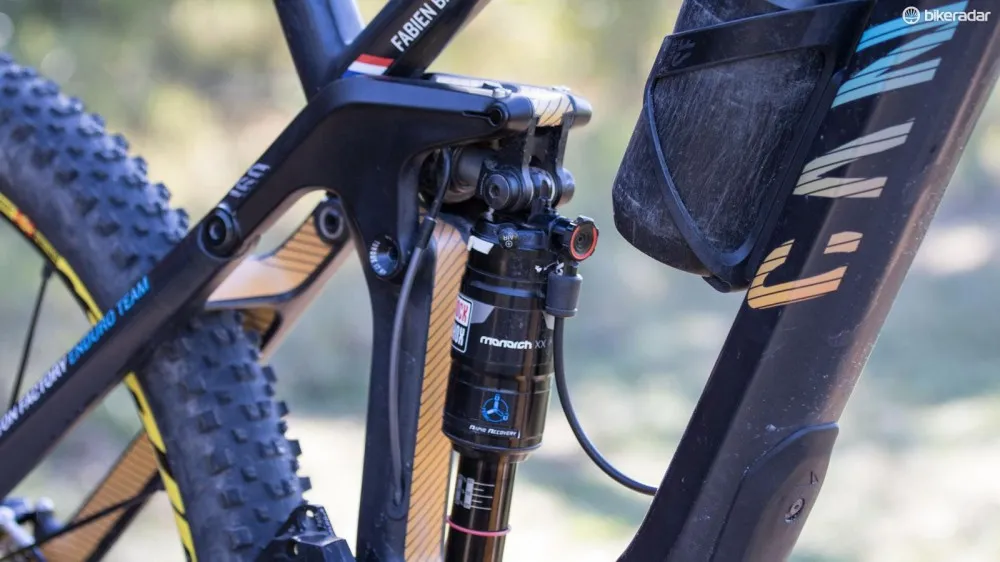
The Monarch XX is more commonly used in XC racing
“My rear shock is the Monarch or Monarch Plus based on the course," says Barel. "The standard Monarch has a tendency to overheat on long, steep courses. I ride the Monarch 80 percent of the time. I run it at 190psi with quite a lot of sag due to the Shapeshifter, so in downhill mode I ride 35 percent sag.”
Barel adds that he doesn't bottom out often, owing to the Canyon's progressive nature. "I use my shock with seven elastic bands to reduce the air volume – the maximum you can use," he says.
“You don’t need the lockout with the Shapeshifter, but the hydraulic XLoc [on the rear shock] allows me to stay in the downhill mode when trails get fast and flat. It’s set up with 70 to 80 percent lock. It just stiffens the suspension for me to sprint or even pump jumps.
“If I have a pedalling section on the road, then the combination of the Shapeshifter and the XLoc makes a near-rigid bike. For me, this bike is the best weapon you can have in enduro.”
When asked whether he’d still use such a race-focused setup in retirement, Barel simply confirmed that he "really likes" it for the way he rides.
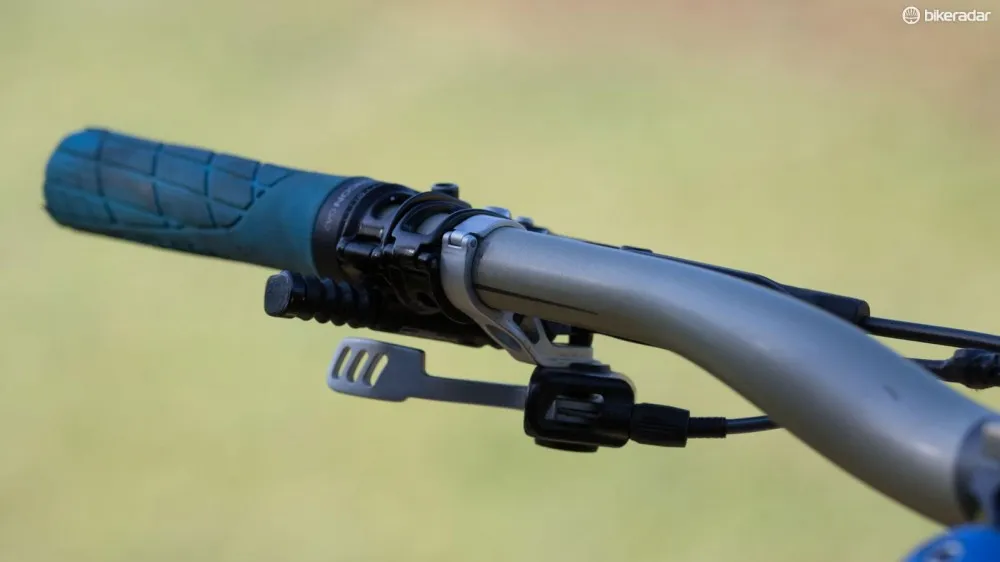
There's more on the right too...
Obviously, there’s a whole lot going on at the bars when you have a remote for the Shapeshifter, a dropper seatpost, brake levers, a shifter and then a remote lockout. For this, Barel jokes that his bar setup is like a PlayStation controller, and that perhaps he should have them labelled with an X, circle, triangle and square.
For wider adjustment range, the Reverb remote and brake lever are run on separate clamps. On the left, the Reverb remote sits on top, with the Shapeshifter lever below the bar. On the right, the rear shock lockout sits inboard of the gear shifter on a matchmaker clamp, with a little friction tape bonded ontop for easier use.
The rolling stock
When it comes to product development, Mavic is the other brand Barel is an integral part of. He’s forever testing new wheels and tyres, but was rolling on some fairly stock 27.5in equipment during his stay in Australia.
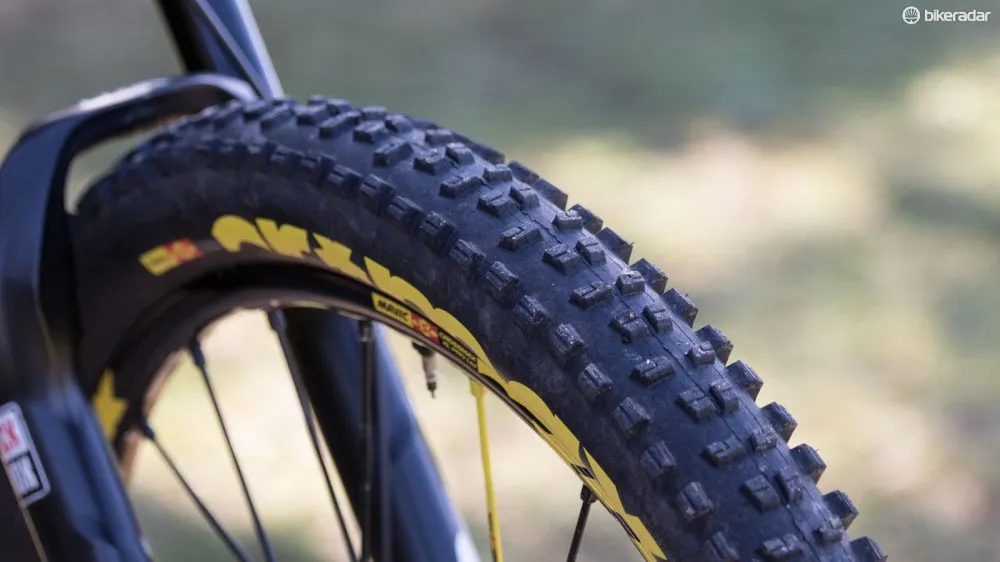
More aggressive rubber on the front, set up tubeless
“I generally run 2.4 (inch) tyres. I generally run more aggressive (tread) on the front than I do on the rear. This allows me to drift the bike a little more, but also (have) a faster rolling tyre on the back.”
When asked about his tubeless setup, Barel says it’s a mostly standard tubeless affair, but won’t explain exactly what sealant he's running – perhaps a hint of things to come.
“I haven’t played with tyre retention systems, I have certainly played with the tyre and amount of sealant I use. I always have 80 to 120ml of liquid in the tyre at any one point.”
And what pressure does Barel run? Depending on the course, 24.5 to 27.5psi at the front, and 27.5 to 30.5psi out back.
The specific setup
Looking over the other parts of the bike, there are more than a few personal touches.
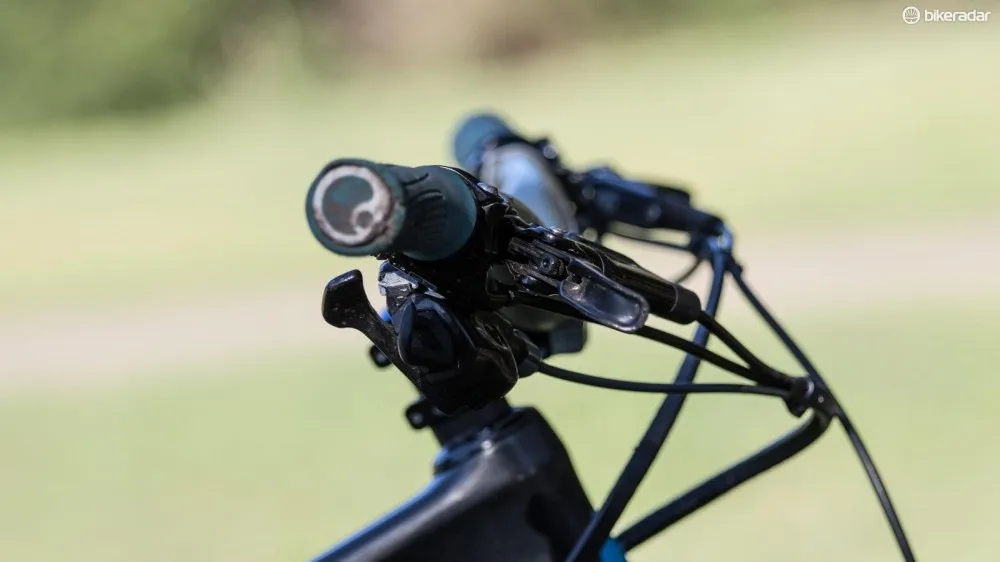
Nope, they're not even
“The brake-lever setup is really important," Barel explains. "The angle and reach is as import as your cleat setup in many ways. My levers are really specifically adjusted in that the angles vary left to right. This is due to shoulder injury and lets me be straight on the bike, mostly when standing. [For this] I use an inclinometer to measure the angle – I am very precise on this."
His shoe is similar, Barel says, with a different height in sole thickness left to right owing to a bad femur break in 2010. He has custom Mavic shoes with a 1cm thicker sole for the shorter leg – and then the cleat is adjusted too.
“[With saddle] setback, I’m forward as far as I can. I use a lot of quad for acceleration, and I don’t want the saddle in the way when I accelerate. The front centre and my top tube are long too.”
Barel says his race bike of the last season was very similar to this bike. "I use quite a high rise at the handlebar: 10mm stem spacer [under the stem], 35mm rise handlebar.
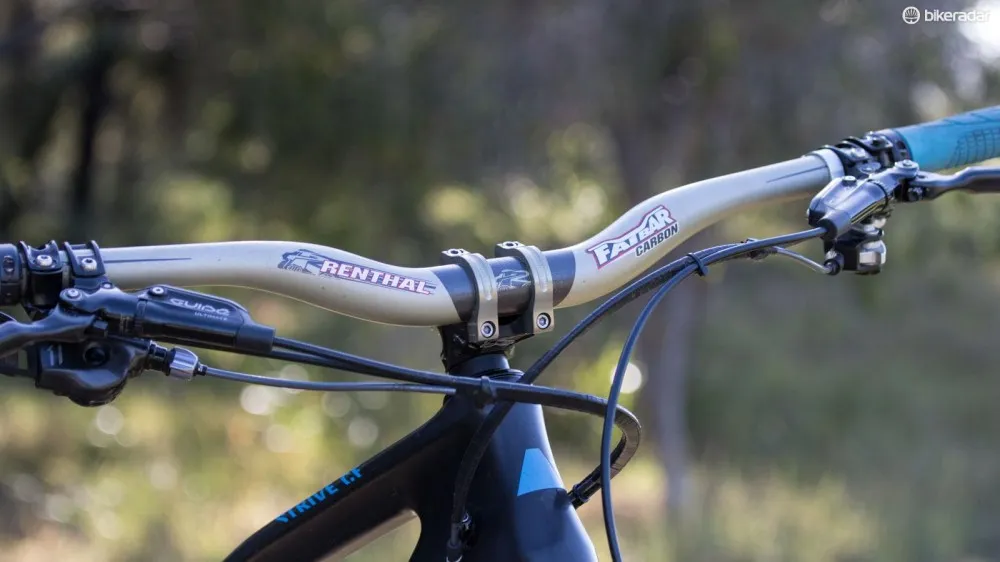
No compromises when it comes to descending
“That’s quite a high cockpit, but I definitely find my position better for riding downhill. It’s not the most efficient climbing position, but I don’t want to compromise the descending.”
Underfoot, Barel prefers the stability of CrankBrothers wide Mallet DH pedals. He says he finds CrankBros' new Enduro pedal axle too close to close to the crank.
Personal gear and accessories
With such attention to the bike, it’s little surprise that Barel is as focused on his clothing and accessories too. Part of his retirement, we learn, will be spent growing his own helmet brand – Urge.
“In Enduro, everything needs to be right. For me, my passion is helmets and that is seen with Urge. You know, it needs real protection, but needs to be comfortable and ventilated.”
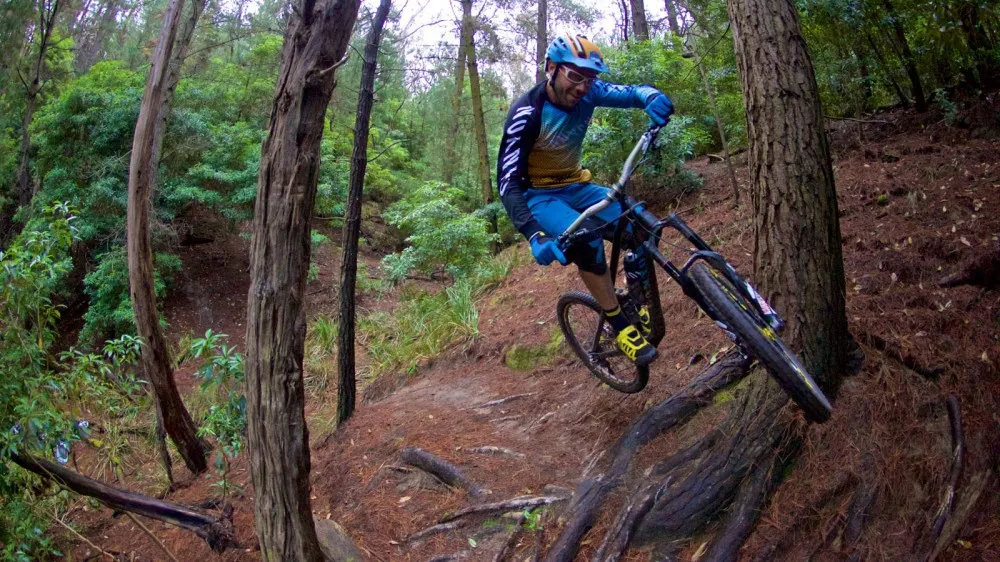
(Image credit: Matt Holmes)
“Urge is a pure mountain bike brand. We never made road, motocross or ski helmets. For enduro, you have specific demands. We need to have our [own] product, and there is lots of products in enduro that are taking too much from other disciplines.
“At the moment, enduro is still a mix between XC and downhill," Barel concludes. "Brands are starting to realise that there is a lot to do.”
null
Just a few days ago, Canyon released this highlights video for Barel’s retirement from racing. We’re sure we’ll see him tearing through turns again soon.
Complete bike specifications
- Frame: Canyon Strive CF Team, size large
- Fork: RockShox Lyric RCT3, 170mm, three Bottomless Tokens, 90psi
- Rear shock: RockShox Monarch XX, seven volume spacers, 190psi
- Headset: CaneCreek
- Stem: Renthal, 50mm
- Handlebar: Renthal Fatbar Carbon, 780mm
- Grips: Ergon GA2 prototype (now released)
- Front brake: SRAM Guide Ultimate,
- Rear brake: SRAM Guide Ultimate
- Rear derailleur: SRAM XX1
- Shift levers: SRAM XX1 trigger
- Cassette: SRAM XX1 10-42t 11-speed
- Chain: SRAM XX1
- Crankset: SRAM XX1, 34 or 36t chainring, 175mm crank
- Bottom bracket: SRAM GXP threaded
- Pedals: CrankBrothers Mallet DH
- Wheelset: Mavic Crossmax Enduro
- Front tyre: Mavic Charge 2.4in
- Rear tyre: Mavic Quest 2.4in
- Saddle: Ergon SMG Saddle, carbon rail
- Seatpost: RockShox Reverb Stealth, 125mm, separate lever clamp
- Bottle cages: Canyon Cage SF
- Other accessories: E-13 XCX chain guide
Critical measurements
- Rider's height: 1.81m (5ft 11in)
- Rider's weight: 79kg (174lb)
- Saddle height from BB, c-t: 750mm
- Saddle setback: "Slammed forward"
- Seat tube length (c-t): 460mm
- Head tube length: 135mm
- Top tube length (effective): 648mm
- Weight: Barel says his bike weighs about 12.8kg on race day, although we weighed this ‘training’ bike at 13.3kg including pedals and bottle cage.
